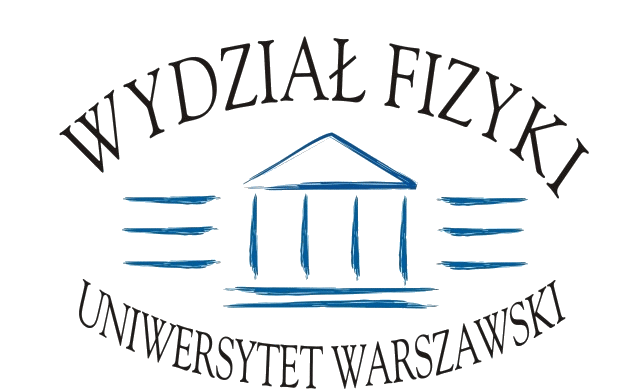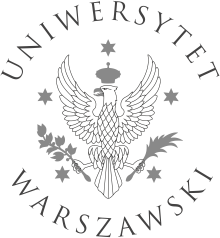Konwersatorium im. Leopolda Infelda
2006/2007 | 2007/2008 | 2008/2009 | 2009/2010 | 2010/2011 | 2011/2012 | 2012/2013 | 2013/2014 | 2014/2015 | 2015/2016 | 2016/2017 | 2017/2018
The Cosmic Microwave Background Radiation at 50
Information, Communication and Computing: Past, Present and Future
The field of Information, Communication and Computing, sometimes abbreviated to ICC or ICT (with T=Technology) is characterized by a number of major discoveries mainly due to progressing insights in physics, mathematics and some other fields of science and technology.
In the presentation, I shall review the main past discoveries and discuss the present day playing field, to end with what I consider the main challenges for the future, trying, in particular, to motivate needed further developments in the key domains of science involved.
Searching for radio flares from ultracool dwarfs and exoplanets
Scale invariance generically implies conformal invariance in three dimensions
Thermodynamics as a resource theory
Recently, tools of quantum information have been applied to thermodynamics. The new approach allows to meaningfully define thermodynamics of microscopic systems out of equilibrium allowed to interact with a heat bath as well as to define ultimate, model independent limitations for thermodynamical processing.
Thermodynamics in such micro-regime becomes a resource theory, where the main question is whether a given state can be transformed into another state by means of some class of operations. The latter called Thermal Operations consists of arbitrary unitary operations that commute with the total bath-system Hamiltonian.
We will show, how the standard free energy splits in micro-system into at least two different free energies - one denoting the work needed to create a given state, and the other one - being the work that can be later recovered from the system.
We will also report on some recent advances, including thermodynamical processing of coherences.
The talk will be mostly based on the following articles:
Fundamental limitations for quantum and nanoscale thermodynamics, M. Horodecki & J. Oppenheim, http://arxiv.org/abs/1111.3834
http://www.nature.com/ncomms/2013/130626/ncomms3059/full/ncomms3059.html
The second laws of quantum thermodynamics Fernando Brandão, Michał Horodecki, Nelly Ng, Jonathan Oppenheim and Stephanie Wehner, http://arxiv.org/abs/1305.5278
http://www.pnas.org/content/112/11/3275.abstract
Towards fully quantum second laws of thermodynamics: limitations on the evolution of quantum coherences, Piotr Ćwikliński, Michał Studziński, Michał Horodecki, Jonathan Oppenheim,
http://arxiv.org/abs/1405.5029
Present and future of Particle Physics: the role of Europe in the global context
The present situation of Particle Physics, with the recent exceptional experimental results, has shown the resilience of the Standard Model.
A similar situation is found in the field of Astrophysics, with the Planck data well described within the LambdaCDM.
But despite their success, we know that these models are incomplete, since they cannot explain a plethora of phenomena like dark matter, dark energy, baryon asymmetry, and fail to include gravity in a QFT frame.In this seminar I will describe how the world community, and in particular Europe, is gearing up to enter in this exciting period, which might lead us to a new vision of Nature.
M-Theory and Hidden Spacetime in Quantum Field Theory
Power spectrum of curvature perturbations in multi-field models of inflation
Quantum fluctuations of geometry in hot Universe
Czy w Polsce można dokonywać znaczących odkryć naukowych?
Streszczenie referatu:
Współczesne oceny poziomu naukowego wydziałów czy instytutów, a także ośrodków akademickich, nie wykorzystują informacji o całkowitej liczbie publikacji czy odniesień do nich, ale budowane są na podstawie analizy kilku najważniejszych prac, które ukazują, czy dokonuje się tam przełomowych odkryć naukowych. Tezą odczytu jest przekonanie, że odpowiedź na postawione w tytule pytanie jest twierdząca, ale że liczba znaczących odkryć naukowych jest daleko za mała, nawet normując ją do poziomu finansowania nauki w Polsce. Korzystajac z doświadczeń czteroletniego udziału w pracach Rady Naukowej i Komitetu Sterujacego ERC przedstawię subiektywną ocenę przyczyn tej sytuacji oraz uwagi o możliwych środkach zaradczych.
Referat zostanie wygłoszony w ramach wspólnego posiedzenia konwersatoriów im. J. Pniewskiego i L. Infelda.
Zapraszamy!
Jacek Baranowski, Jan Kalinowski, Jerzy Kijowski, Czesław Radzewicz, Wojciech Satuła, Janusz Skalski
Chemiczny Nobel 2014
Komitet Noblowski zdecydował, że tegoroczną nagrodę w dziedzinie chemii otrzyma 3 uczonych za opracowanie metod optycznej mikroskopii superrozdzielczej, dzięki którym można obrazować przedmioty mniejsze niż dopuszcza ograniczenie dyfrakcyjne. Trudno o lepszy dowód na hipotezę mówiącą, że żadna dziedzina nauki czy techniki nie jest skończona i zamknięta a jakościowa zmiana jest możliwa nawet tam gdzie rozwój trwa już kilkaset lat.W wykładzie spróbuję pokazać wagę mikroskopii superrozdzielczej, szczególnie dla nauk o życiu, na tle historycznym. Omówię podstawowe idee stojące za tym wynalazkiem; całość zilustruję kolorowymi obrazami rzeczy o rozmiarach mniejszych niż to wynika z formuły Abbe.
Referat zostanie wygłoszony w ramach wspólnego posiedzenia konwersatoriów im. L. Infelda i im. J. Pniewskiego
Relativistic quantum information - a subjective overview

Nowe źródła światła – Nagroda Nobla z Fizyki w r. 2014
Streszczenie referatu:
W bieżącym roku Nagrodę Nobla z fizyki otrzymała trójka japońskich uczonych za „opracowanie efektywnych diod świecących niebieskim światłem”. W swoim referacie przedstawię fizyczne podstawy działania nowej klasy źródeł światła, jakie powstały dzięki ich pionierskim pracom. Omówię najważniejsze odkrycia w dziedzinie badań półprzewodnikowych struktur azotowych jakie doprowadziły do tego sukcesu. Wspomnę o polskim wkładzie w badania dotyczące tej tematyki, a także o wkładzie jednego z Noblistów w ten polski wkład.
Referat zostanie wygłoszony w ramach wspólnego posiedzenia konwersatoriów im. J. Pniewskiego i L. Infelda.
Zapraszamy!
Jacek Baranowski, Jan Kalinowski, Jerzy Kijowski, Czesław Radzewicz, Wojciech Satuła, Janusz Skalski
Plasma - based pulse amplification – a route to Exawatt Zettawatt laser pulses
In the last decade the increasing availability of Terra- and Petawatt class lasers with ps to fs pulse duration has intensified the interest in the relativistic interaction between laser radiation and matter. Today laser intensities of up to 1022 W/cm2 can be achieved routinely, delivering field strengths at which electrons become ultra-relativistic within a single cycle of the optical field. Via the interaction of such intense fields with plasma it is possible to generate electric and magnetic fields inside plasma of the order of TV/m and kilo-Tesla, respectively. This leads to several promising applications such as compact particle and radiation sources.
Laser pulses with power on the Exawatt/Zettawatt scale would not only improve current applications, but would open the door to access new regimes, e.g. direct access to the QED vacuum via the optical fields. Most high-intensity lasers today rely on the Chirped Pulse Amplification (CPA) scheme that can only hardly be scaled to these power levels due to material damage thresholds. A novel approach that allows circumventing these issues is the use of plasma as an amplification medium. Plasma oscillations (electron Langmuir waves or Ion oscillations) may be used as optical gratings, scattering the energy from a long pump pulse into a short seed pulse. Plasma-based pulse amplification is currently discussed as a prospective key component of the next generation high-intensity laser pulses.
The first part of the presentation introduces into the field of relativistic laser-plasma interaction and highlights the current research activities such as generation of GeV electron beams via wake-field acceleration, MeV proton acceleration from overdense plasma target interaction and generation of atto-second X-ray radiation.
In the second part of the presentation the theory of plasma-based laser-pulse amplification will be discussed. It will be shown that two types of amplifiers, Raman or Brillouin, are possible. The former uses electron plasma oscillations, the latter ion plasma oscillations to transfer energy from the pump pulse into the seed pulse. For both types, the present situation and future perspectives will be discussed.





